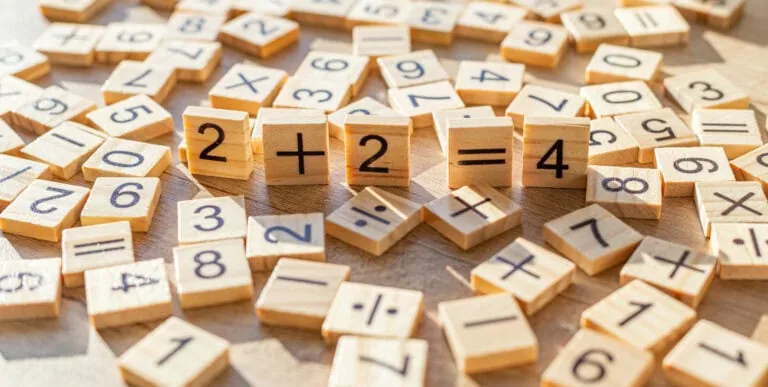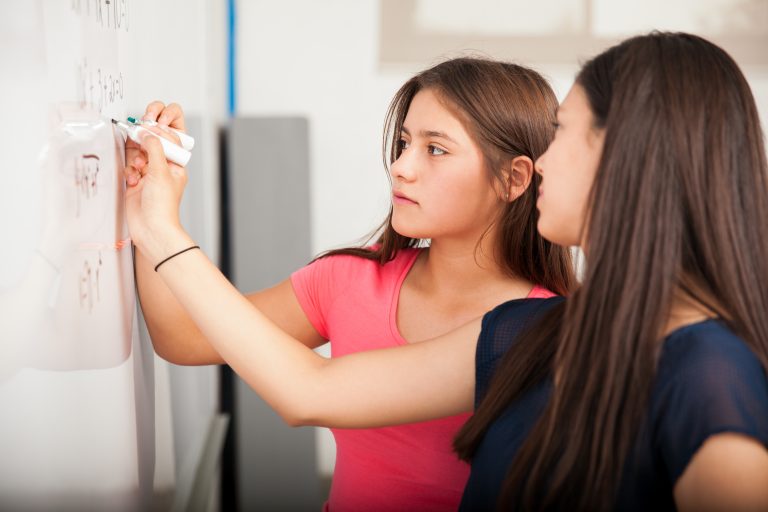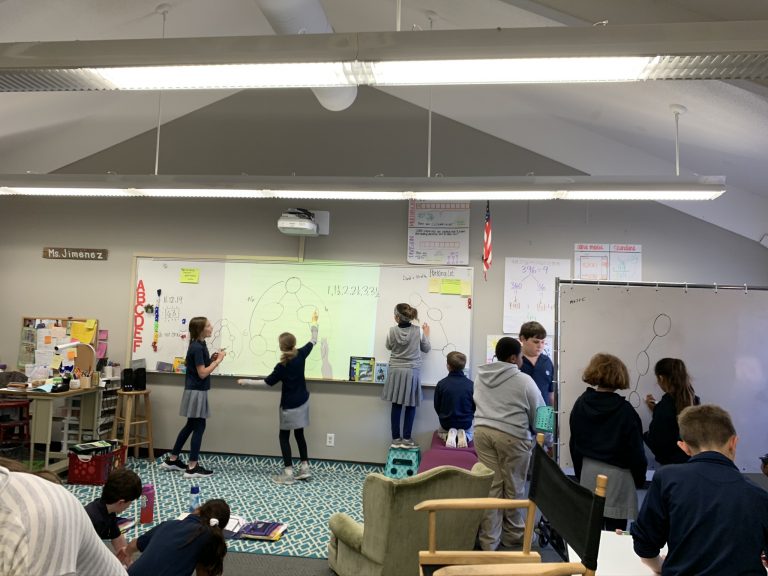By: Amy Bilek, K-8 Math Instructional Coach at The Frances Xavier Warde School in Chicago
I recently picked up Peter Liljedahl’s book Building a Thinking Classroom in Mathematics Grade K-12: 14 Teaching Practices for Enhancing Learning and couldn’t put it down. In this text, Liljedahl translates his 15 years of research into a practical guide on how to move toward a thinking classroom.
We know that many of us learned in math classrooms that encouraged mimicking the procedures presented by teachers, rather than thinking. Liljedahl’s book challenges teachers to start each class with a thinking task that students would work on collaboratively. In the think! Mathematics series we call these thinking tasks anchor tasks. If you are moving or have moved your instructional practices to be more task-based, that is a great step toward creating thinking classrooms.
Yet, while teachers may be starting their math classroom with a task (from think! Mathematics or elsewhere), many teachers are still struggling with some of these issues: Some students don’t get started on the task right away, what can I do? Students are hesitant to take risks and make mistakes. Students don’t really work together and collaborate during a task. When working together, one student at the table ends up doing all the work. It is hard to get my more timid students engaged and sharing.
If these are challenges in your classrooms during anchor tasks, here are three small tweaks, rooted in Liljedahl’s research, that will push all your students to engage in thinking in your classroom.
1) Present the Anchor Task Verbally
In my experience, often teachers fall into a routine of projecting the task on a screen at the front of the room or passing out the anchor task on paper. When the task is given textually, students must decode and make sense of the problem by processing this visual information. Liljedahl’s research suggests presenting the task verbally and only writing a few necessary notes on the board.
For example in the below anchor task, instead of projecting this or giving this as a handout to students:


When giving a task, write on the board only the details that the student would otherwise need to remember – quantities, measurements, geometric shapes, data, etc.
If you are thinking that you may try to give the text both textually and verbally to reach both auditory and visual learners, it is important to note that Liljedahl’s research clearly showed that giving the task verbally and textually at the same time produces the same results as giving the text only. Due to the presence of text, the students will be drawn to the written word instead of listening to the verbal discussion.
Liljedahl shared, “…the results showed that giving tasks verbally produced more thinking – sooner and deeper – and generated fewer questions at every grade level, in every context, and even in classes with high populations of English language learners”
(p. 110).
2) Students Work on Vertical Non-Permanent Surfaces
I’ve discussed with many teachers where students should be recording their thoughts and ideas on the anchor task. Some teachers have students work on the anchor task in a formal structure in their math journals and others have students work on paper handouts.
Liljedahl’s research was very clear on this. Students that respond to a task on a vertical non-permanent surface are much more likely to take risks and begin the task much more quickly. If students can be standing and working on wall mounted whiteboards, that is truly the ideal for creating thinking classrooms.
The thinking classroom research gathered and compared data with students working on vertical whiteboards, horizontal whiteboards, vertical paper, horizontal paper, and notebooks. With vertical whiteboards, the time on task was over 7 minutes, while working in notebooks was more like 3.5 minutes. Researchers also scored on the amount of discussion, amount of participating, amount of persistence, and amount of knowledge mobility when groups worked on these different surfaces. In all of these measures, groups using vertical whiteboards were the most effective in fostering these aspects of a thinking classroom.
If you are picturing your classroom now and feeling like you’ll be lacking square footage on the board for groups to work. Consider creative, low-cost ideas to make more vertical non-permanent surfaces in your room, such as covering the bulletin boards in plastic tablecloths. You may want to consider wipebook reusable boards as well.
3) Visibly Random Groupings for Collaboration
As teachers, we are always trying to be strategic in our groupings of students. Should we group students with similar ability levels together? Or with differing ability levels together? Should friends be paired together or kept in separate groupings? There are so many options to consider, and each has pros and cons.
Liljedahl’s research on this was crystal clear, suggesting that students frequently be put in visibly random groupings. It is important that teachers make it obvious to students that you are grouping them in a completely random way because students must perceive and believe in the randomness. For example, if you group kids according to a deck of cards, shuffle and have a student cut the deck before randomly passing out the grouping cards at the start of each class.
After years of working to be strategic with my groupings based on the task at hand, this idea of giving up all that control and leaving it up to chance, surprised me. Yet the research highlighted that along with an increase in thinking, there were also several other benefits from implementing frequency visibly random groups, such as: willingness to collaborate, elimination of social barriers, increased knowledge mobility, increased enthusiasm for mathematical learning, and reduced social stress.
The research showed that the ideal group size was two students in kindergarten through second grade, and for third grade and up the optimal group size was three. If your groups are meeting virtually in break-out rooms, the newest research suggests that in a virtual math classroom, groups should be a bit larger in size, needing four to six students to fuel the discussion.
Conclusion: Evidence of Student Thinking
Teaching through an anchor task is the first step, but the way you present the task, where the students complete the task, and who the students work with can have a big impact on student thinking. If you are already teaching through task, try these three small tweaks and observe what you notice about student thinking throughout the following days and weeks.
Start your class by sharing the anchor task orally and only writing a few notes on the board, as needed. Have students working on vertical white boards, if possible, or at least white boards (rather than paper and pencil). Group kids using a visibly random method (such as a shuffled deck of cards) to make clear that your groupings are random and changing every day.
Liljedahl summarizes, “In the 15 years that I have been engaged in the thinking classroom research, nothing we have tried has had such a positive and profound effect on student thinking as having them work in random groups at vertical whiteboards. Students were thinking longer, discussing more mathematics, and persisting when the tasks were hard” (58).
LILJEDAHL, PETER. BUILDING THINKING CLASSROOMS IN MATHEMATICS, GRADES K-12: 14 Teaching Practices for… Enhancing Learning. SAGE PUBLICATIONS INC, 2021.



